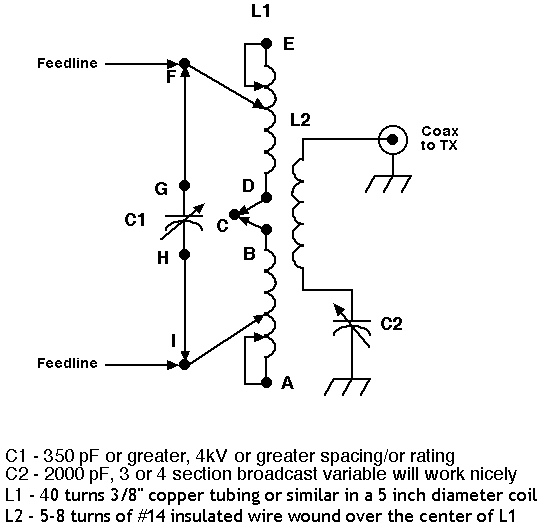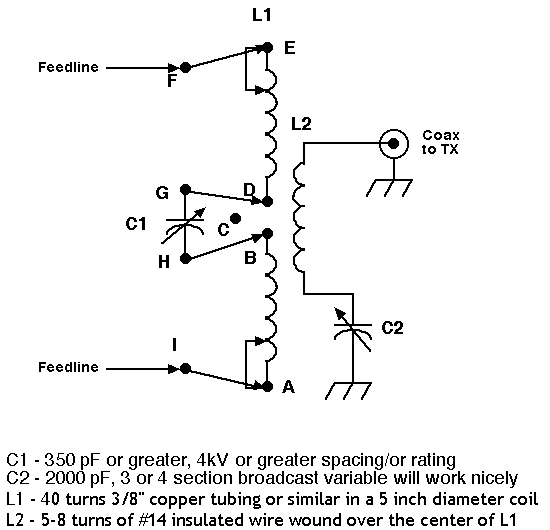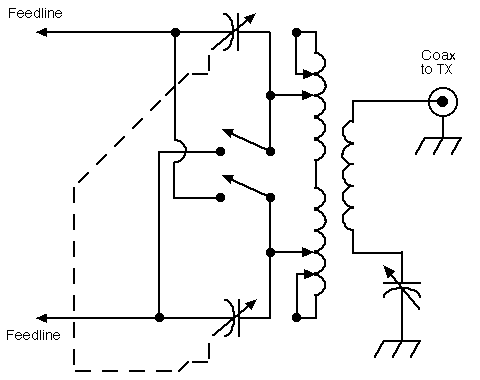|
Getting on 160 Meters Without a Full-Sized Antenna by Steve - WB3HUZ |
|
It’s
that time of year again. Winter is on the way and fall is
here, depending where you live. The lower frequency HF bands
are much quieter, now that the static from the summer thunderstorms is
gone. Do you feel left out when you hear other AMers talk
about getting on 160 meters because you don’t have room for
an antenna? Well, you may have room after all.
It’s true, a full-sized, half-wave dipole for 160 meters is rather big - around 250 feet long. If you’re like me, you don’t have enough real estate for that amount of wire! However, you DO NOT need a full sized antenna to produce a respectable, if not good signal on 160 meters. First, let’s assume you already have a 75 meter dipole up. If it is coax fed, you could connect the appropriate antenna tuner, tune it up on 160 meters, and see what happens. This arrangement will work, but at will require a pretty hefty tuner, especially of you’re plan to run higher power AM. I haven’t heard to many people with real good signals using this setup, but it is probably the easiest way to get on 160 meters. Another option is to short the center conductor and shield of the coax together and use the tuner, once again, to to the system up on 160 meter. This approach often works better than the first approach but it does require a ground system. This means radials. There is tons of information on radial systems in numerous antenna books. In short, the more the better. If you don’t feel like messing with radials, then stick with a balanced antenna. [You’re less likely to have RFI problems with a balanced antenna too.] The most common balanced antenna in amateur radio is the dipole. Let’s go back to your 75 meter dipole. If you are already feeding it with ladder line or open-wire line, or are willing to change to the feed line from your existing coax, many possibilities open up. The most simple is a 75 meter dipole fed with open wire or ladder line, tuned up on 160 meters, as shown in Figure 1.
Figure 1 - Basic 75 Meter Dipole
Figure 2 - Link Coupled Tuner, Parellel-Fed
It very likely that since you are using a short antenna, the link tuner will work better (tune more easily and have higher efficiency - less heating) if it is configued for series-fed tuning, as shown in Figure 3.
Figure 3 - Link Coupled Tuner, Series-Fed
Notice that Figure 2 and Figure 3 are nearly identical, just the position of the various jumpers is changed. Once again, there are numerous mechanical options for switching between the two feed methods, so use your ingenuity. Figure 4 shows one option if you have a big knife switch (it could be done with jumpers too) and a split stator cap or two caps on a common shaft (ganged).
Figure 4 - Link Coupled Tuner, Switchable
We can make it easier on our tuner by increasing the length of the
dipole. Right, you say. Except, I don’t have
room. Probably not in a straight line. But additional wire
can be added by dangling some vertically from the ends of your existing
dipole, as shown in Figure
3. Add as much as you can, at least till the
ends are within 15-20 feet from the ground. If the ends of
your existing dipole are at 50 feet, you can add 30 feet to each end
with no problem. Your 120 foot dipole is now 180 feet
. This length is a lot closer to the full half-wavelngth size
of 250 feet. It is much easier to tune, and much less likely
to cause your tuner to get hot. So, it should put out a
better signal.
Figure 5 - 75 Meter Dipole with Vertical Sections Added
Figure 6 - Added Length with Horizontal Zig Zag
Figure 7 - Added Length with Ladder Line Sections
Figure 8 - Coax Fed Shortie
So, there you have it - some options for getting on 160 meters. There are many more that we won’t delve into at this time - Inverted-Ls, short verticals, various types of loops, and numerous other loading schemes for shortened dipoles. The bottom line is not to feel left out on the 160 meter fun this winter. Read, research, test and experiment. You probably can get on 160. It will just take a little extra work, but will be very much worth it. There are numerous stations on 160 meters using one of these antennas (or a variation) with great success. They work and are proven. Catch you on 160 meters. |







